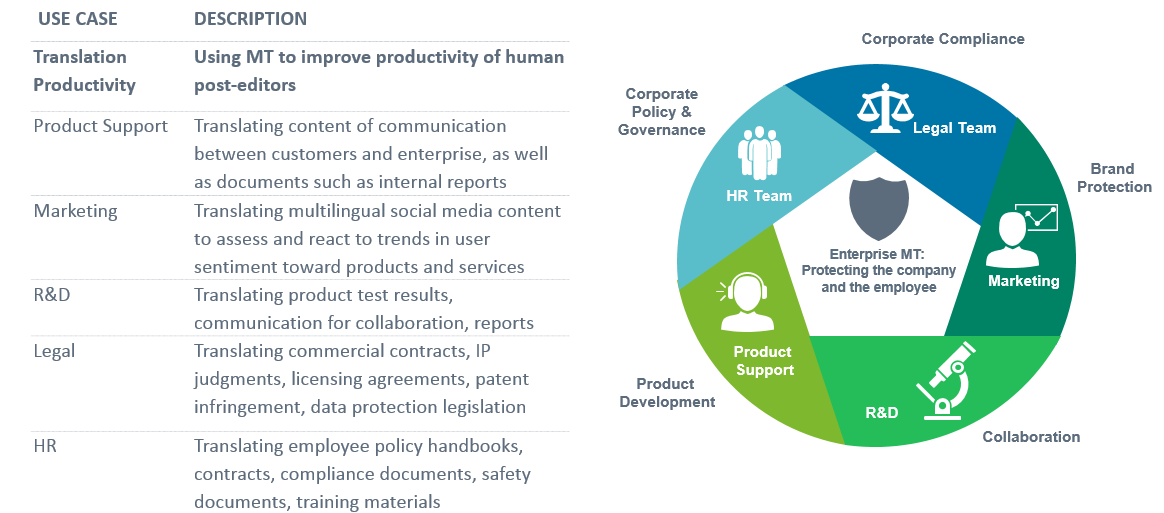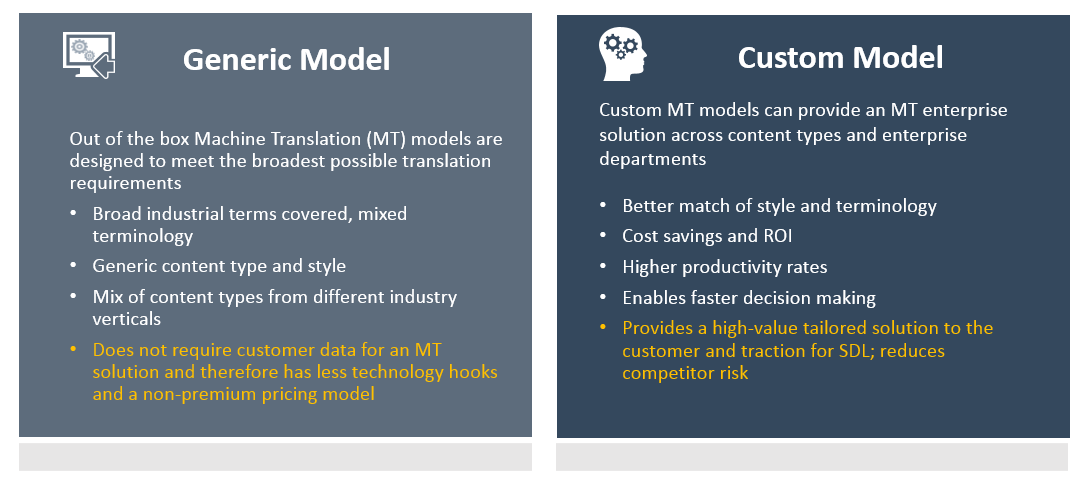One of the most complex challenges enterprises face is how to make their multilingual customer base engage with their content. This is even more important in a world that is being shaped by the COVID-19 pandemic where customers move online in ever greater numbers.
Companies need to innovate and react fast to meet the needs of their customers. What can LSPs do to support their clients during these personally and financially challenging times? At SDL, our clients are our partners and we understand how challenging the past few months have been. We know that many companies are suffering financially during this crisis but still need to share their content and sell their products. We can help support business goals through embedding a technology strategy with a strong focus on machine translation (MT).
We all know that not all content is created equal. Content can range from high visibility, sensitive or regulated to low visibility and perishable. Our job is to find the right MT solution for client content, regardless of how diverse it is. We understand when an MT only solution makes sense and when to offer a high touch process with human involvement. Ultimately, our know-how makes it possible for clients to stay connected to their customer base.
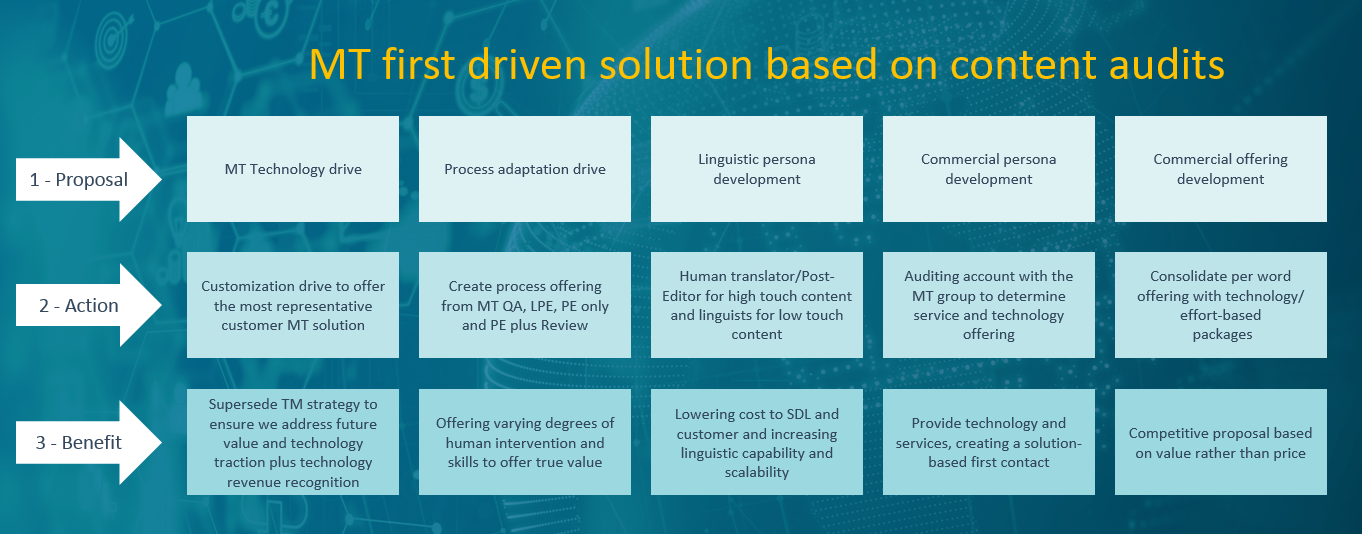
So how easy is it to embed an MT content strategy? Neural Machine translation (NMT) technology has flattened the MT landscape, with many LSPs partnering with Machine Translation providers to offer MT solutions.
As the need for technology-driven solutions and ML/AI-enabled custom models continues to grow, LSPs specializing in this field are able to offer holistic content solutions for even the most challenging requirements.
Why does an MT-first strategy make sense?
We have known for a long time that humans alone cannot cope with the volume of enterprise content that needs to be translated. Cost would be prohibitive and human translation quality may not be necessary for certain client content types. Increasing amounts of content require understandable rather than perfect quality. LSPs increasingly are content enablers rather than simply operating through a narrow set of parameters based solely on quality. Content needs to be categorized and prioritized so that the best solution for any given content type can be offered.
Linguistic quality is still a key metric but as we continue to see exponential content growth, other factors such as speed, footprint and cost become increasingly important. Despite embracing cost-effective solutions such as Post-Editing, many enterprises still place linguistic quality at the top of their requirements, with the gold standard being human translation.
However, restricted budgets have fostered the realisation that not all content is equal and that a lot of content requires less human interaction to make it relevant, usable and ultimately valuable to the enterprise and its customer base. LSPs will only succeed if they understand this.
With perfect quality no longer being the defining factor for what a good translation looks like, usability and relevance become equally important. A technology driven solution that allows enterprises to add human intervention as and when required not only saves time and money but adds scalability. It is up to the LSP to assess the content and give a transparent appraisal of complexity and localization requirements. This can be achieved through a content audit.
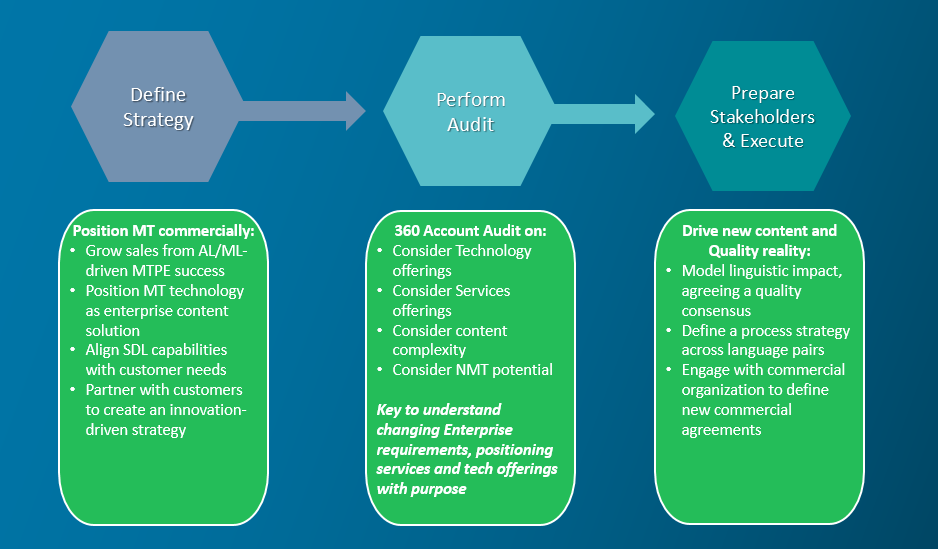
Customer requests are seldom uniform, either in content or output expectations. To perform a content audit, LSPs require a representative sample of all content flows, to judge its appropriateness for a process or technology. This is vital because common, cost effective solutions may be developed for similar contents. Once content has been assessed, the LSP will drive a discussion with the client to see how much human involvement is needed. This can range from simple QA measures on machine-translated content to varying degrees of post-editing. The content audit enables the client to review spend as well as process and technology to achieve a solution that satisfies both linguistic and commercial requirements.
By auditing content across enterprise stakeholders and embedding technology-based solutions LSPs can help their clients even more. A good example are HR departments. MT technology already has a place in many HR organizations and during the COVID-19 pandemic it has helped to enact business continuity plans and distribute vital company communications quickly and reliably. But HR is not the only function that can benefit from MT technology as the illustration below shows.
Consistent and considered MT-enabled communication can not only save time and money but help provide reassurance in times of unprecedented instability. Holistic solutions driven by MT and orchestrated by human expertise are now more relevant than ever.
Why personas and processes are needed
Pure MT is increasingly used as a first approach when enterprises streamline costs. It is worth considering that it is possible to upgrade specific content to a human touch solution. This way it is possible to align human intervention and technology carefully with business value.
To support their clients, LSPs need to look beyond standardized roles and approaches to upskill their linguists and project managers in line with the new technology requirements. Translators have already migrated their skill sets to Post-Editing and evaluating MT models and project managers are increasingly required to build solutions with MT technology at their core. Account managers offer leadership and additional services when embedding a content strategy into technology roadmaps.
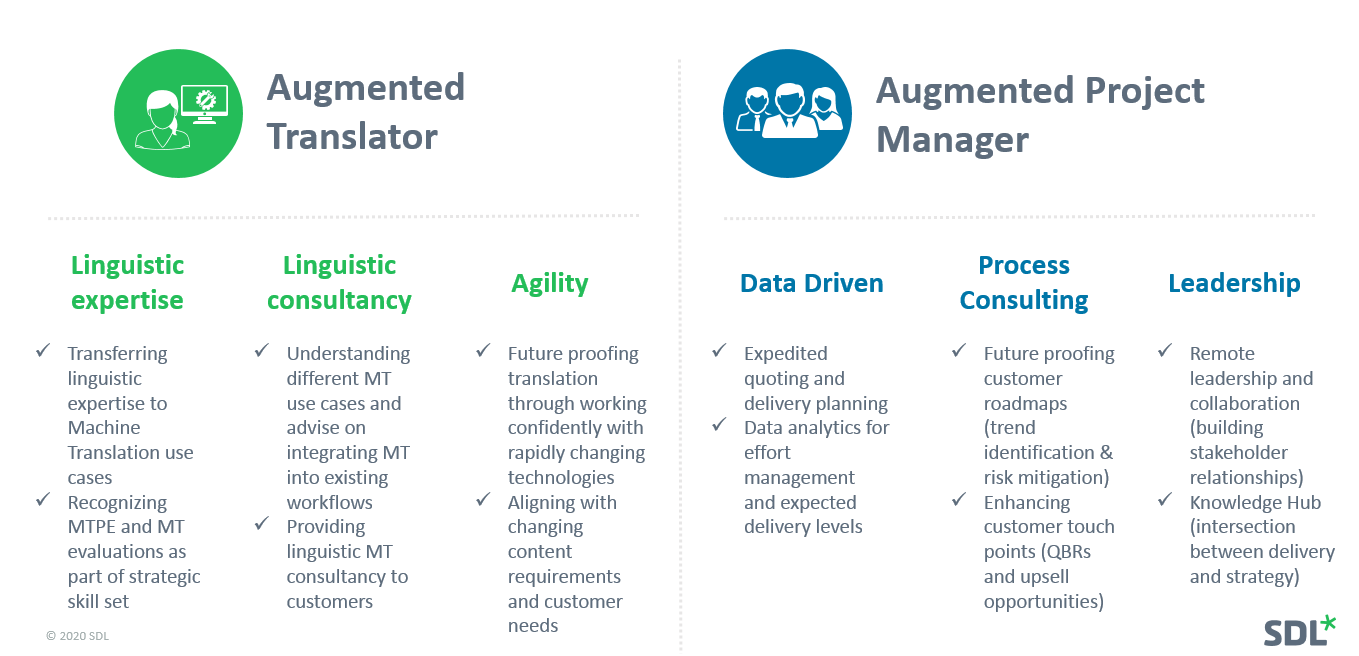
What are the additional services that can be offered to clients?
- Content audits: Using AI innovation in automated content analysis, underpinned by human experts to provide accurate mappings between content and process
- Post-editing training: Providing workshops and trainings to facilitate a smooth transfer of skills from translation to post-editing
- Data improvement: Training linguists to improve data for MT creation or to give an uplift to raw MT output to enhance understanding
Clearly, there is enormous scope for both process and people development when it comes to embedding MT into an LSP service offering. Therefore, knowing that localization is intricately linked with technology innovation, LSPs will need to make a significant commitment in terms of budgets and learning to properly serve future enterprise needs.
Custom MT technology
There are different options when embedding MT into the enterprise. One key aspect is what kind of MT model is deployed. Some content may work well with a generic MT model which is an out of the box solution. However, most enterprise content is tied to a distinct set of terminology that is specific to the company itself and the industry they work in. A custom model is trained on a defined set of customer data and reproduces the client style and terminology more closely than a generic model would. This is a great way to engage and enhance the end user experience.
At the heart of every MT strategy is data. LSPs have worked with the concept of data for years, using Translation Memory technology to leverage text, increase consistency and generate savings. Now, high-quality data created by humans is a key building block for AI solutions such as Neural MT. Specialist content audits can determine not just the best technology and process, but ensure that high quality data is still produced by humans for the on-going improvements to AI/ML solutions such as NMT which will remain data dependent.
No more compromises?
Collaboration between LSPs and their clients is always evolving but AI and in particular NMT technology have opened up new ways of working together. Historically, localization before MT was always a compromise between quality, speed and cost, depending on key client requirements. Intelligent content auditing and the option of tailored AI and NMT solutions are now paving the way for LSPs to redefine their client relationships through comprehensive content strategies, best-in-breed customized MT technology and added value. AI-driven technologies enable enterprises to make better choices to suit their particular content while increasing productivity and scalability. This tailored content approach is making localization more sustainable in the long run and reduces the need to make difficult choices between quality, speed and cost.



